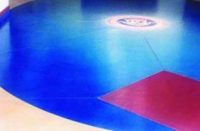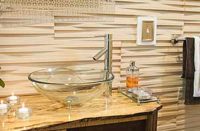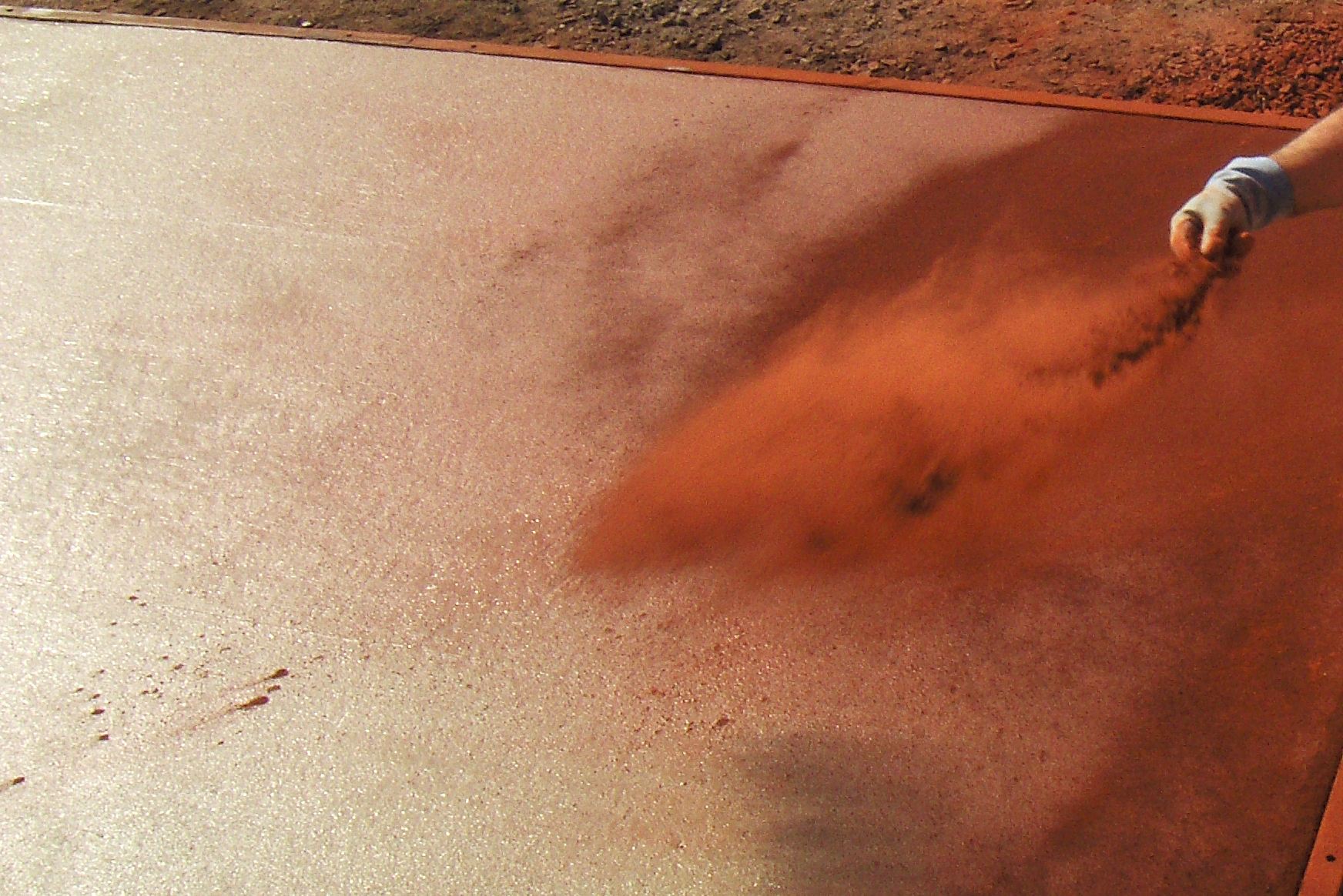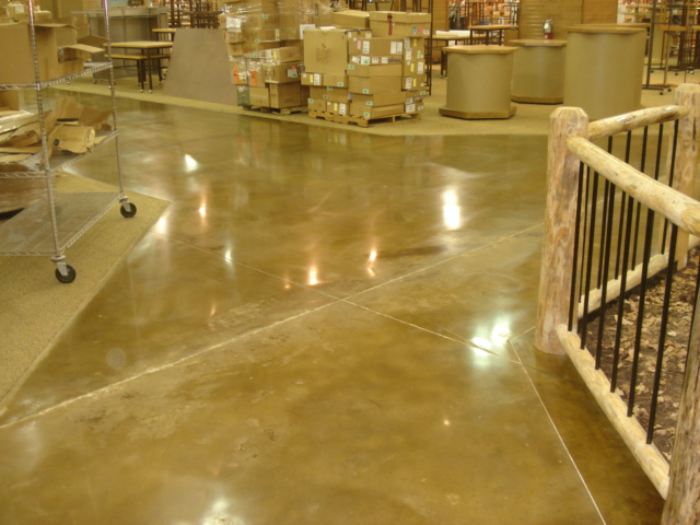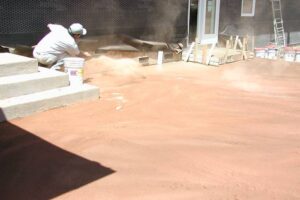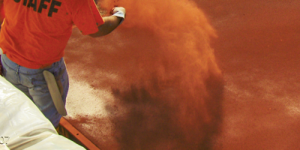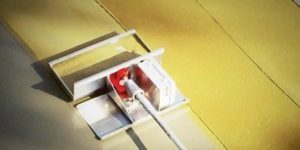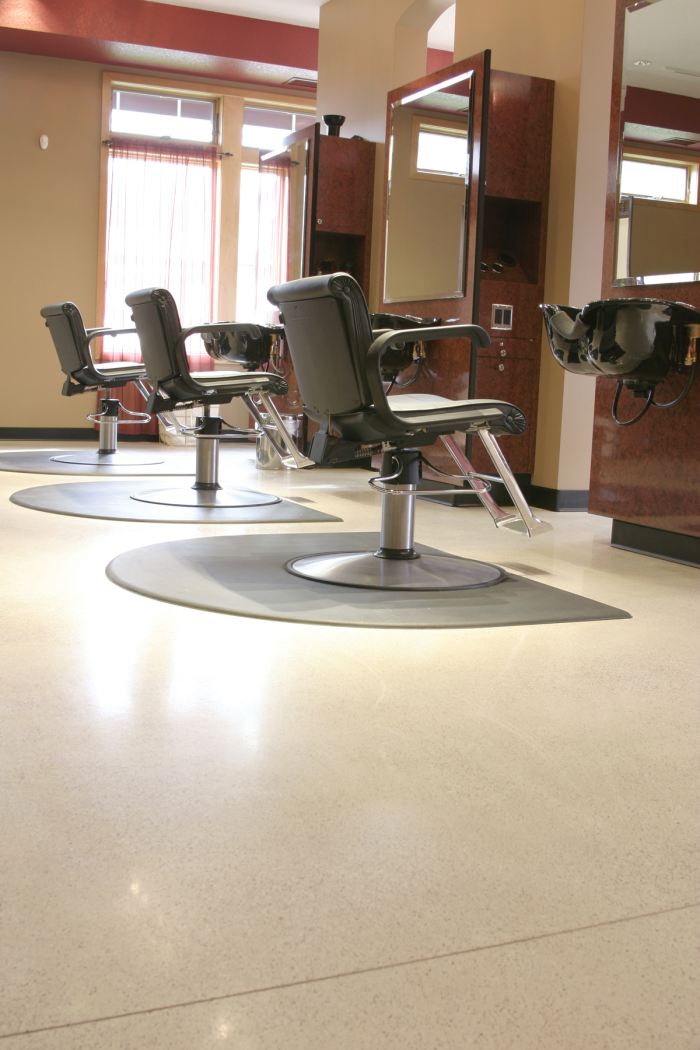
Concrete Decor asked two experienced contractors to discuss the special considerations involved in polishing floors after using dry-shake color hardeners to color and harden the surface. Their views: One prefers to avoid dry-shake color hardeners altogether when installing polished surfaces, while the other says polishing can be done successfully if contractors are aware of a few potential problems.
Polished concrete floors, with their gleaming surfaces and low maintenance requirements, are popular choices for car dealerships. They are also popular for big box stores and malls, as well as private homes. Options for coloring them include dyes that are specifically designed for polished concrete, an integral color that is added to the mix before pouring, acid stains, or shake-on color hardeners that are tossed by hand onto fresh concrete and worked into the surface with a float or trowel.
One expert’s opinion
The method of hand-broadcasting dry-shake color hardeners, which results in inconsistent thickness, is one reason why Jeff McCool avoids them if he’s going for a polished look. Because polishing means grinding the surface to achieve the desired smoothness and shine, there’s a risk of removing the color altogether if you apply the dry-shake too thinly, he says.
“I tried that on one job and it did just what I said it would,” says McCool, of Jeffco Concrete Contractors in Tuscaloosa, Ala. After one pass with the diamond polisher, he says, “it looked like a spotted dog out there. We kind of learned that is not the way to go.”
However, he adds that if dry-shake hardener were applied consistently with a mechanical spreader, polishing results would be better.
David Stephenson of American Concrete Concepts in Springdale, Ark., is more favorable toward polishing dry-shake color hardener. He notes that in the curing process, the color from dry shakes pulls into the slab from the top down. That means the darkest color is on the very top, so polishing will lighten the color somewhat. An applicator can compensate for this by using extra color.
Besides the curing process, Stephenson lists several other considerations:
Flatness
Stephenson says heavy polishing equipment will level off high spots and take the color with it. If contractors cannot achieve the recommended flatness, or just aren’t sure how flat the floor is, he says one option is to use polishing equipment with flexible plates. These ride the surface rather than cutting off humps or other imperfections.
Porosity
Watch for areas that are rougher and more porous, Stephenson says. Large ride-on power trowels can’t get right up to the edge of the pour. In this case they recommend hand troweling to get close to the wall. Stephenson says walk-behind trowels do a better job of creating a tight surface and more consistent color. He says he also asks concrete finishers to make a few passes with pans on their trowel machines before they run their blades. The pans will make the surface a lot flatter and more consistent.
Chalk lines
Stephenson says in new construction projects, the framers will snap chalk lines. They then cover them with clear acrylic paint so they’ll stay put. Those lines can show up in the end, because the clear acrylic paint may absorb color hardener more effectively than the slab itself. A simple solution is to ask framers to skip that step.
Dry-shake color hardeners are available in a wide range of colors. You can also often find dyes to match. Stephenson and McCool agree that you can use dyes to touch up spots with inconsistent color.
In fact, both prefer coloring polished concrete floors that have been colored with dyes, which can be solvent-based or water-based and provide more consistency.
“For me, personally, I don’t do many dry-shake or integral colors floors anymore,” Stephenson says. And while McCool says he likes the saturated color, range of choices, strength and wear resistance of dry shakes — “Don’t get me wrong. We use dry shakes day in and day out in our imprinted concrete,” he says. However, he just doesn’t use them in polished applications.
Stephenson says you can avoid many problems through testing. As such, problems with polishing dry-shake colored floors are no exception. You must do samples for every job, every time, he says. It may be possible to use a higher grit, remove less color, and end up with the flat, shiny floor you’re going for.
All contractors know that avoiding problems such as grinding through the color is far more cost-effective than fixing them later.
“When you have a snafu like that, if just throws wrenches in everyone’s gears,” McCool says. “You want to be able to do your job and do it right and get on down the road and get out of everyone else’s way.”
